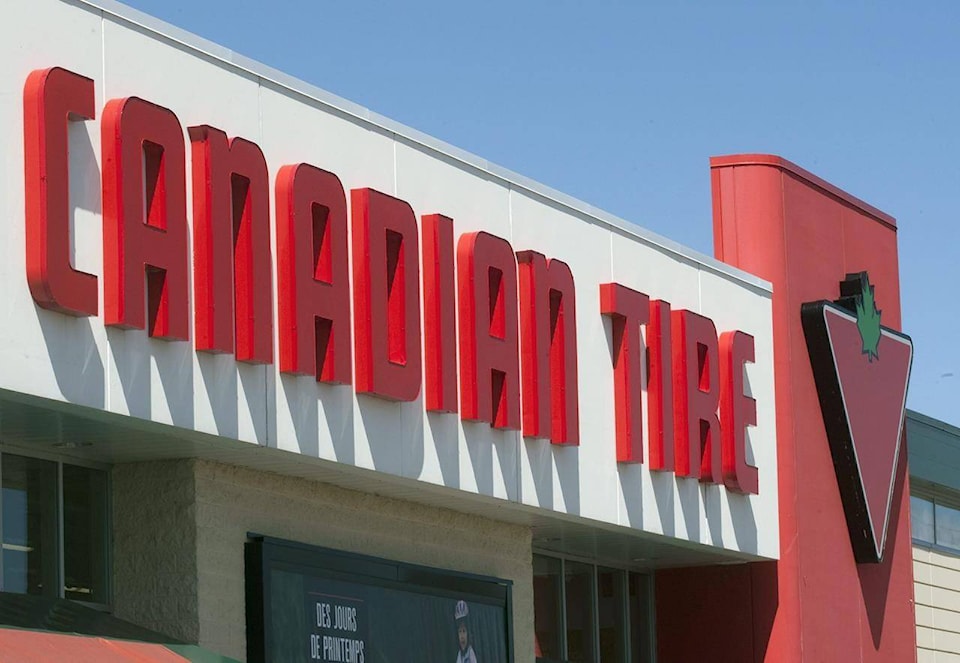In a pandemic world where inventory is king, Canadian Tire Corp. hopes to secure its spot as one of Canada’s reigning retailers by strengthening its supply chain.
The company, which beat analysts’ expectations with its latest quarterly results on Thursday, said it purchased a 25 per cent stake in a B.C. inland port facility.
The $40-million deal with Ashcroft Terminal Ltd., about 300 kilometres east of Vancouver with direct access to CP and CN rail mainlines, bolsters Canadian Tire’s long-term supply chain capabilities, said president and CEO Greg Hicks.
“Our retail supply chain is a monster machine that needs to do its job before the customer order gets fulfilled,” he said during a conference call.
“This $40-million investment will enhance the flexibility of our supply chain and drive longer-term savings and lower carbon emissions by allowing us to stage more inventory in B.C. rather than shipping it back and forth across the country.”
His comments came as the company posted a second quarter revenue of $3.92 billion, up more than 20 per cent from $3.16 billion a year ago, while profit attributable to shareholders climbed to $223.6 million, or $3.64 per diluted share, compared with a loss of $20 million or 33 cents per share in 2020.
Analysts on average had expected $3.85 billion in revenue and an adjusted profit of $2.88 per share, according to financial market data firm Refinitiv.
Despite the strong results, Canadian Tire still faced headwinds in the quarter ended July 3.
Many of its retail stores, which include banners like Canadian Tire, SportChek and Mark’s, faced capacity limits or were closed to in-person shopping for several weeks due to COVID-19 public health measures.
“We left sales on the table in Q2 as a result of the restrictions,” Hicks said. “But despite the closures, restrictions and some headwinds around transportation and supply availability, we continue to move product through our supply chain at significantly elevated levels.”
He added: “We leverage relationships with vendors, transportation providers, and third-party logistics facilities to get inventory to the dealers.”
TJ Flood, president of the Canadian Tire retail chain, said the company’s strong inventory availability has been fuelling the store’s growth.
“Since the beginning of the pandemic, with a strained global supply chain, our strategy has been to be aggressive in securing inventory to fill the customer demand that exists,” he told analysts. “We’ve continued to deploy this strategy throughout 2021.”
The company has placed a renewed focused on strengthening its supply chain given that securing inventory is expected to be an ongoing issue, Flood said.
“The global supply chain continues to be strained and things could be choppy … but we continue to work with our vendor partners every day to explore innovative ways to navigate the supply chain,” he said.
For example, the company recently chartered three vessels with 2,000 containers each to transport goods — the first time ever the retailer has chartered its own boats, Flood said.
Yet rising freight costs have created some “inflationary pressure,” Flood said.
Canadian Tire is also dealing with commodity cost pressure in certain product categories, including items made with plastic resin and exercise weights, he said.
“We’ve built strong capabilities to help us navigate this inflationary pressure and manage our margin rates,” Flood said. “We’re not going to give an inch on being priced competitively.”
This report by The Canadian Press was first published Aug. 12, 2021.
Companies in this story: (TSX:CTC, TSX:CTC.A)
Brett Bundale, The Canadian Press
